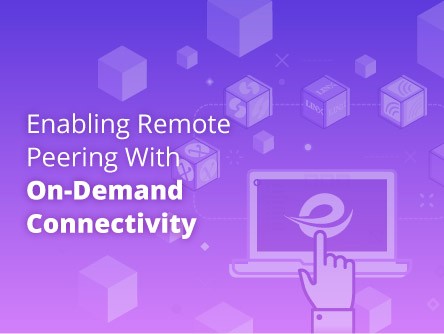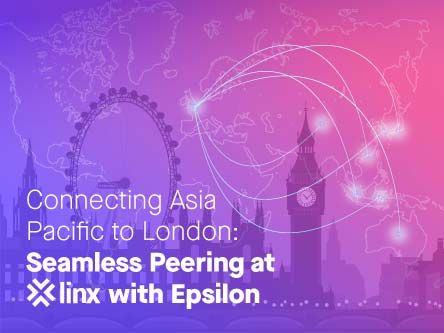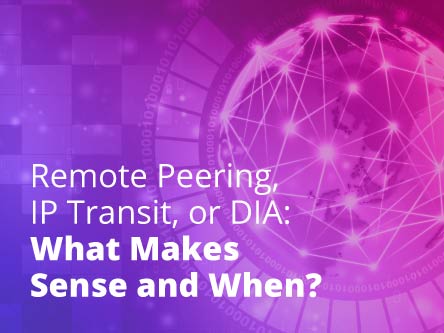On-demand connectivity maximises the benefits of global internet exchanges. It super-charges the efficiency, resiliency and performance that IX deliver and enables Internet Service Providers (ISPs), Content Providers and any other player interconnecting on IP, to benefit from remote peering.
Service providers do not have to be physically present at internet exchanges and can simply rely on on-demand connectivity to make remote peering work for them. On-demand connectivity optimises remote peering and enables service providers to rapidly connect to exchanges and access new peering partners.
While Internet exchanges remove the complexity from interconnecting and routing traffic, connecting to these hubs can still be complex and difficult to manage. Service providers want the simplicity of using an Internet exchange but still have to reach exchange points in different metro markets globally.
On-demand connectivity changes that. It puts the control in the hands of the service provider and enables them to reach Internet exchanges anywhere in the world at the click of a button. It removes the barriers to using Internet exchanges around the world while benefiting from being present in hubs in Asia, the Middle East, Europe and the Americas. On-demand connectivity removes the limits on how service providers use Internet exchanges and gives them instant access to new and scalable networking.
When choosing a connectivity provider for delivering traffic to Internet exchanges, service providers need to look for:
- Truly Global Presence – On-demand connectivity platform providers need to offer presence that spans the globe. They should deliver access to world-leading hubs like De-CIX (Frankfurt), AMS-IX (Amsterdam), LINX (London), NYIIX (New York), SGIX (Singapore) but also smaller exchanges in local markets.
- ‘Click-to-Connect’ Provisioning – Global Internet exchanges should be instantly accessible and supported with on-demand connectivity. Service providers should be able to connect to exchanges anywhere in the world when they want it. In today’s market, service providers need to be agile and it is critical that connectivity is delivered on-demand.
- Support for Remote Peering – Connectivity providers need to enable remote peering across their network and enable their partners to peer seamlessly and around the globe. They should be able to give service providers the ability to peer even without presence. That reduces costs and offers a truly flexible and elastic infrastructure.
- Portal or API-based Management – Service providers should be able to control and monitor their connectivity with a simple and seamless interface. Connecting to an Internet exchange should be as easy as booking an airline ticket or using an eCommerce site. With a web portal or API-based approach, service providers are in the driver’s seat and can access almost any exchange 24/7.
- Guaranteed End-to-End Quality – Quality of Service (QoS) is key. Service providers need to trust that their connectivity provider can deliver the best possible performance with consistency and reliability. Guaranteed end-to-end SLAs are critical to successfully accessing and leveraging internet exchanges. Connectivity to the exchange cannot be the weak link.
- A Partner-centric Approach – The connectivity provider needs to be committed to the overall success of the service provider’s business and deliver customer service excellence. Even if connectivity is delivered via a platform, the provider must be dedicated to partnering with the service provider for mutual success. They need to be focused on meeting big picture objectives.
The Internet exchange model has accelerated how service providers interconnect and on-demand connectivity is taking this to a new level.
If you’d like to learn more about on-demand access to global Internet exchanges and how Epsilon is helping its partners to maximise the benefits of Internet exchanges get in touch: info@epsilontel.com







